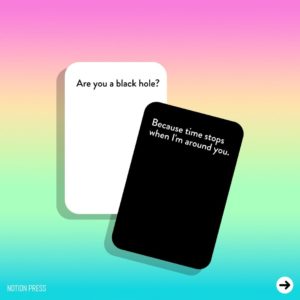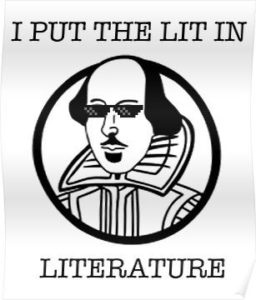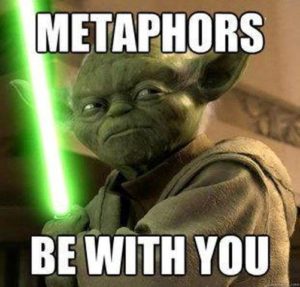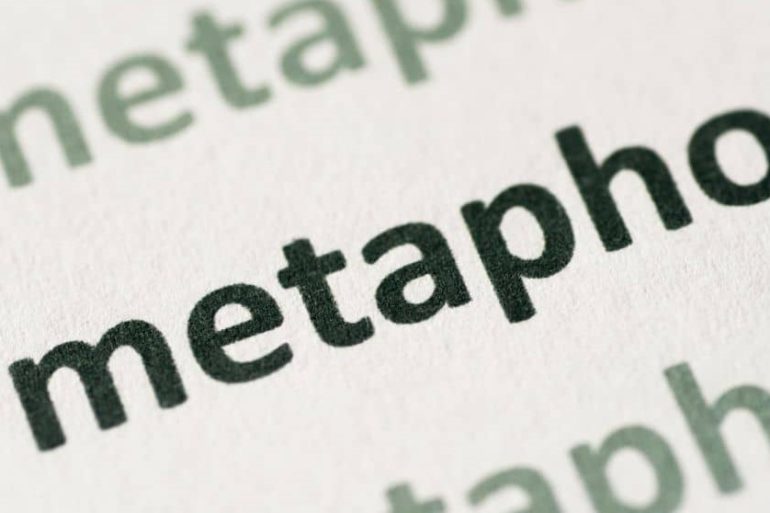What is a Metaphor- A Guide for Writers
Metaphors are some of the most powerful tools in a writer’s arsenal. They can be used to make an idea more concrete, to create images that linger in the reader’s mind long after they’ve finished reading, and to add nuance and depth to a story. But how do you use them effectively? And what is a metaphor, exactly?
In this article, we’ll explore these questions and more. We’ll start by discussing what metaphors are and how they work. Then we’ll look at some tips for using them effectively in your writing. Finally, we’ll take a closer look at some famous examples of metaphors in action.
- What is a metaphor and how does it work?
- Metaphors in the modern world
- The importance of metaphors in storytelling
- Metaphor vs Simile
- What are the different types of metaphors?
- Examples of metaphors
- Is Personification a metaphor?
- How to create your original metaphors
- How to create your original metaphors
- How to use metaphors in your writing for maximum effect?
- Exciting metaphor exercises for writers
What is a metaphor and how does it work?
A metaphor is a figure of speech that uses a word or a phrase to describe an object or an action. Metaphors are often used in poetry and literature. Metaphors can be powerful tools for writers because they help to create images in the reader’s mind.
The workings of a Metaphor
Metaphors can also be used to make comparisons between two things that are not alike. For example, the phrase “my heart is aching” is a metaphor for feeling sad. The word “heart” is used to represent the emotions that the person is feeling.
The phrase “the sun was huge” is a metaphor for how hot it was outside. The word “sun” is being used to represent heat. Metaphors can be helpful in writing because they can make the writing more interesting and exotic. metaphors can also help to make complex ideas easier to understand.

However, metaphors can be overused, and they can sometimes make writing seem contrived or cheesy. When using metaphors, writers should be careful to choose words that are appropriate for their audience and purpose.
Metaphors in the modern world
Metaphors are a figure of speech that uses one thing to represent another. They can be found in everyday speech, and they also play an important role in literature. In the modern world, metaphors are often used to simplify complex ideas or to help people understand new concepts.
When someone says “the world is your oyster,” they are using a metaphor to tell you that you have unlimited potential and opportunities. metaphors can also be used to make an argument more persuasive. If you want to convince someone that a new product is the best on the market, you might say “this car is the Rolls-Royce of SUVs.” By comparing the car to a luxurious and well-respected brand, you are trying to show that it is of high quality. metaphors can also be used for dramatic effect.
In Romeo and Juliet, the example of a metaphor is when Shakespeare uses the phrase “star-crossed lovers” to describe Romeo and Juliet’s doomed relationship. The presence of metaphors in the modern world shows that they are still an important and relevant form of communication.
For writers, metaphors can be a powerful tool for making their work more effective and exciting. When used skillfully, metaphors can help to simplify complex ideas, make arguments more persuasive, and add drama to a story. As such, metaphors hold a great deal of value for modern writers.
The importance of metaphors in storytelling
Metaphors are often used in stories to help paint a picture for the reader and to enhance the story. The use of metaphors is an effective tool in storytelling since the days of ancient literature. As we know a metaphor is a word or phrase in which an object or idea is compared to another and an interesting analogy is suggested.
In particular, metaphors can help to create suspense, tension, or even humor in a story. They can also be used to add depth and meaning to a character or situation. In recent years, the use of metaphors in storytelling has evolved significantly.

Many modern authors now make use of conceptual metaphors, which are based on our understanding of one concept in terms of another. This allows for a more nuanced and complex understanding of the story being told.
Ultimately, the importance of metaphors in storytelling lies in their ability to enhance the experience for the reader. By adding depth and meaning to the story, metaphors can help us to better understand and enjoy the tales that we read.
Metaphor Vs Simile
Metaphors and similes are two ways of describing something by comparing it to something else. A metaphor is a figure of speech that uses an image, story, or tangible thing to represent an intangible quality or idea. In other words, a metaphor helps you visualize something otherwise difficult to imagine. Similes, on the other hand, are a more specific type of metaphor.

They use the words “like” or “as” to make a comparison between two, unlike things. You might say “she’s as fast as a cheetah.” Both metaphors and similes can be used to make writing more interesting and to help readers visualize what is being described. When used effectively, they can also be quite powerful. However, they should be used sparingly, as overuse can make writing seem contrived or trite.
What are the different types of metaphors?
Metaphors are particularly powerful tools that can be used by writers. By comparing two things that are not normally associated with each other, metaphors can help readers to better understand complex ideas.
At the same time, metaphors can also add an element of intrigue or even humor to a piece of writing. There are four different types of metaphors: direct, extended, absolute, and mixed.
Direct metaphors
Direct metaphors are the simplest type of metaphor; they directly compare two things using the words “like” or “as.” For example, “She was as angry as a bear.” In this sentence, the author is directly comparing the woman’s anger to that of a bear.
Extended metaphors
Extended metaphors are slightly more complex; they take a direct metaphor and extend it throughout an entire piece of writing. In other words, extended metaphors use the initial comparison as a way to explore other related ideas. In his famous “I have a dream” speech, Dr. Martin Luther King Jr. extended the metaphor of America as a “promised land” throughout the entire speech.
Absolute metaphors
Absolute metaphors are often used in poetry; they create an intense and vivid comparison between two things by stating that one thing is another thing. For example, in her poem “Wild Geese,” Mary Oliver writes, “You do not have to be good./You only have to let your soft animal body love what it loves.” In this metaphor, Oliver is saying that humans don’t have to be good to be loved; they just need to follow their instincts.
Mixed metaphors
Mixed metaphors occur when two different metaphors are combined into one sentence (often accidentally). For example, “She was running around like a chicken with her head cut off.” In this sentence, the author is mixing the metaphor of someone being frantic with the metaphor of someone being confused. Mixed metaphors can be confusing for readers, so it’s generally best to avoid them if possible!
As you can see, there are four different types of metaphors: direct, extended, absolute, and mixed. Each type of metaphor has its unique purpose and effect. By understanding these different types of metaphors, you can use them more effectively in your writing!
Examples of metaphors
In literature, metaphors are used to create different effects. A metaphor can be used to evoke an emotional response or to paint a picture in the reader’s mind. Different types of metaphors have different effects.

Some examples of metaphor include:
– “All the world’s a stage and all the men and women are merely players…” from Shakespeare’s As You Like It. This is an example of a metaphor that is used to compare the world to a stage. All the world’s a stage is one of the most quoted classic examples of a metaphor in writing.
– “Death be not proud” from John Donne’s poem “Death Be Not Proud.” This is an example of personification, as death is given human characteristics.
Metaphors are powerful tools that can be used to create different effects in the literature. By understanding different types of metaphors in literature and their effects, writers can use them more effectively in their writing.
Is Personification a Metaphor?
When we talk about personification, we are talking about attributing human characteristics to non-human things. For example, “The wind was howling for hours this morning.” In this case, the wind cannot howl, but by personifying it, we are giving it a human character to better describe what it is doing.
Metaphors, on the other hand, are comparisons between two things that are not alike. For example, “She’s a real night owl.” In this case, we are not saying that she is an owl, but rather that she shares some traits with owls – perhaps she is nocturnal or has big eyes. So, to answer the question, personification is a type of metaphor, but there are degrees of difference between the two. With personification, we are attributing human characteristics to non-human things, while with metaphors we are making comparisons between two different things. This is the fundamental difference between metaphor from personification.
How to use metaphors in your writing for maximum effect?
The use of metaphor in writing can help to create an instant connection with the reader, conveying a complex idea with just a few words. When used effectively, metaphors can make writing more exciting and memorable. However, metaphors can also be overused or misunderstood, resulting in a muddled message.

To maximize the impact of metaphors in your writing, follow these tips:
Choose metaphors wisely: The use of metaphor in your work should add something to your writing, not simply repeat what you have already said. It should be fresh and original, evoking an image that the reader can easily understand.
Don’t force it: A metaphor should flow naturally from the rest of your sentence. If it feels forced or contrived, it will probably come across that way to the reader as well.
Edit ruthlessly: Metaphors can easily become cliche if it is overused. Be sure to edit your work carefully, looking for any metaphors that have lost their spark.
By following these tips, you can ensure that your metaphors pack a punch and leave a lasting impression on your readers.
How to create your original metaphors?
Countless metaphors have been used over the centuries, but the best metaphors are those that are original. To create an original metaphor, writers need to think creatively about the connections between things. They need to find connections that other people might not see.
One rich source of metaphors in nature. Writers can find metaphors by observing the world around them and looking for things that remind them of other things. a tree might remind them of a person who is strong and tall and rooted in place. Or a river might remind them of the passage of time, always moving forward but never staying in one place for long.
By taking the time to find creative metaphors, writers can add depth and meaning to their writing. Metaphors can help readers to see the world in new ways and to understand complex ideas more clearly. As such, they are an essential tool for any writer who wants to craft effective and impactful prose.
Exciting metaphor exercises for writers
Metaphor writing can be a fun and exciting way for writers to explore new ideas and expand their creativity. By using metaphor, writers can create new images and concepts that can potentially lead to new insights and perspectives. There are many different metaphor writing exercises that writers can try, and the following are just a few examples.
One exercise is to take a common image or concept and write about it using metaphor. one could take the image of a flower and explore what it would be like if it was a person. What kind of personality would it have? What kind of emotions would it feel? What kind of life would it live? This exercise can help writers to see familiar things in new ways, and it can also be a fun way to play with language.

Another metaphor writing exercise is to choose an object or situation that is confusing or difficult to understand, and then write about it using metaphor. This can help to make the unknown more understandable, and it can also help writers to find new ways of looking at challenging topics. For example, one could write about what it would be like if time was money. How would people spend their time? What would happen if they ran out of time? This exercise can help writers to better understand both metaphors and the topic they are exploring.
These are just a few examples of fun and exciting metaphor writing exercises that writers can try. By exploring metaphor, writers can open up new worlds of possibilities for themselves and their writing.
To create effective metaphors, writers need to think creatively about the connections between things. By taking the time to understand how they work, you can use metaphors more effectively and create richer, more nuanced writing. So keep writing, and don’t be afraid to experiment with metaphors. With a little practice, you’ll be able to master this important literary tool.

